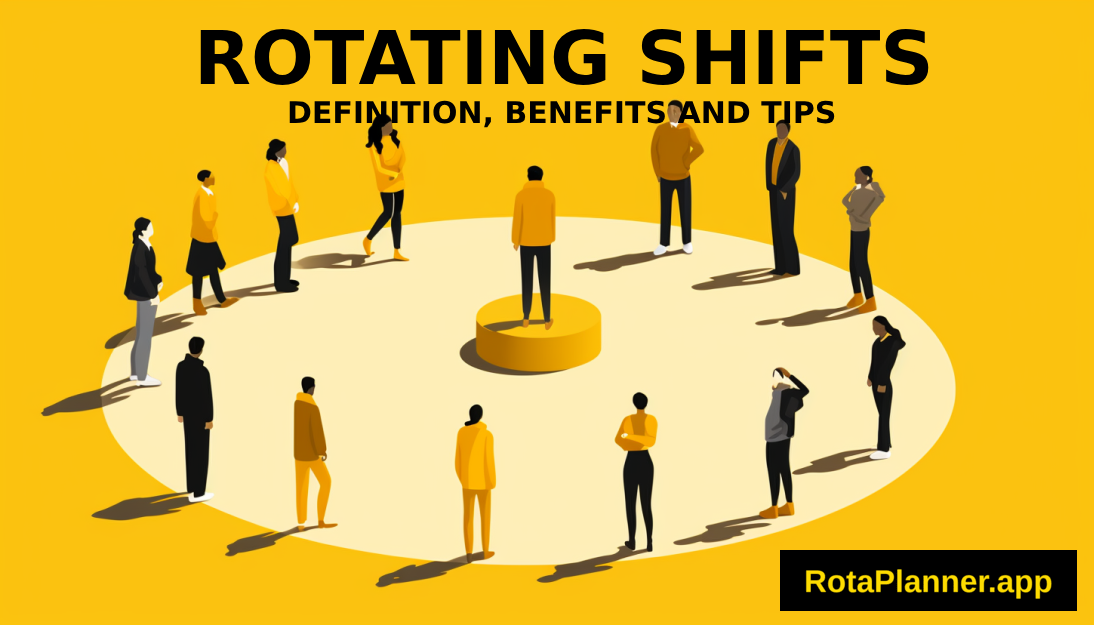
What Are Rotating Shifts?
Rotating shifts are work schedules where employees alternate between different shift times, such as days, evenings, and nights, over a certain period.
This scheduling method allows employers with continuous operation and staff coverage, ensuring business needs are met across all hours.
How do rotating shifts impact employees?
For employees, rotating shifts can offer flexibility and variety but may also pose challenges to their work-life balance and health due to irregular sleeping patterns and lifestyle adjustments.
Understanding Rotating Shifts
Rotating shifts are designed to optimize workforce allocation by cycling employees through different working hours. This ensures operational effectiveness and broad coverage, particularly vital in industries that function round-the-clock.
While configurations vary, the essence of rotating shifts is to provide continuous service or production, ensuring no time period is understaffed. This method also aims to distribute the burden of less desirable night and weekend shifts more evenly among the workforce.

Examples of Rotating Shifts
The structure of rotating shifts can greatly differ across organizations. Here are a few common patterns:
Fixed Rotation
Employees have a predictable schedule that rotates among morning, afternoon, and night shifts, typically on a monthly basis. This pattern allows for easier long-term planning.
Random Rotation
Schedules are less predictable with shifts assigned based on immediate business needs. This requires a greater degree of flexibility from employees but can be essential for industries impacted by seasonal demands or fluctuating workloads.
Benefits and Challenges
Rotating shifts come with their own set of pros and cons:
- Benefits: Operational flexibility, equitable distribution of shifts among staff, and potential for increased earnings due to shift differentials.
- Challenges: Potential health impacts, including sleep disorders and stress, along with difficulties in maintaining social relationships due to unpredictable work hours.
These aspects are critical for both employees and employers to consider when adopting or participating in a rotating shift schedule.
Strategies for Implementation
Effective implementation of rotating shifts involves several key strategies:
- Transparent scheduling practices that provide employees with their schedules well in advance.
- Inclusion of employee preferences wherever possible to improve satisfaction and retention.
- Regular health and wellness checks to monitor the impact of shift work on employees.
These practices help in mitigating the potential downsides of rotating shifts while leveraging their benefits to achieve business goals.
Adjustment Tips for Employees
Adapting to rotating shifts can be made smoother with practical strategies:
- Create a sleep-conducive environment at home to improve the quality of rest, regardless of the time of day.
- Utilize light exposure and diet strategies to help reset your internal clock when transitioning between shifts.
- Invest in healthy relationships by scheduling regular time with friends and family, tailored around your rotating schedule.
These steps can help employees navigate the complexities of rotating shifts, supporting both their professional commitments and personal needs.
Managing Work-Life Balance
Maintaining a healthy work-life balance is particularly challenging for employees on rotating shifts. Strategies include:
- Planning personal activities well in advance around known work schedules.
- Communicating openly with employers about the impact of shift work on life outside of work.
- Seeking support from colleagues, friends, and family to build a support network that understands the unique demands of shift work.
With thoughtful planning and communication, employees can achieve a more manageable balance, ensuring they remain productive at work while still enjoying a fulfilling personal life.
